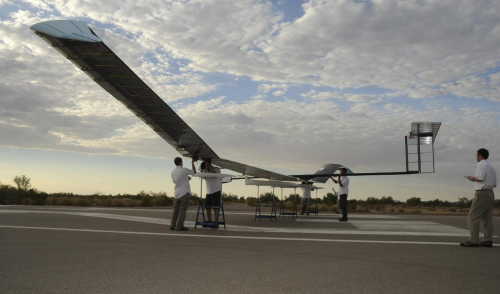
The aircraft has been developed by UK research and technology organisation QinetiQ.
Zephyr is an ultra-lightweight carbon fibre composite aircraft weighing around 30 kg. Launched by hand, the aircraft flies by day on solar power delivered by amorphous silicon solar arrays that cover the wings. The solar panels are also used to recharge the lithium-sulphur batteries, which are used to power the aircraft at night.
QinetiQ used MTM®45-1carbon fibre epoxy resin prepregs manufactured by Advanced Composites Group (ACG) to manufacture the wing and fuselage frames of the Zephyr.
Around 50% larger than the previous Zephyr, technical changes now mean it has a 22.5 m wingspan to accommodate more batteries that are combined with a new integrated power management system. A new aerodynamic shape and high ‘T’ tail also contribute to reduce drag and improved performance. The wing is designed to take maximum advantage of thermal air currents to lift the aircraft to high altitudes.
Potential applications for Zephyr include surveillance and communications relay for a range of military and commercial requirements.





